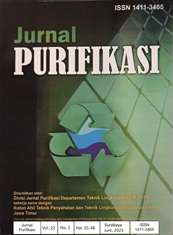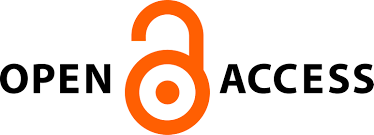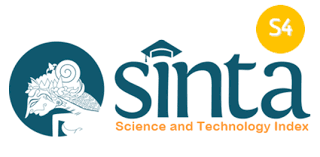STRATEGI PENGENDALIAN NON-REVENUE WATER (NRW) MELALUI PERENCANAAN DMA DAN SCADA BERBASIS IOT DI SPAM IKK BIYONGA
Main Article Content
Abstract
PDAM (Local Drinking Water Company) Gorontalo Regency is one of many PDAM with a healthy performance rating, but the NRW (Non-Revenue Water) value is still quite high at 32.05% and has not reached FCR (Full Cost Recovery). This happens because of the lack of control over the distribution network, so a strategy that originally used a passive approach must be proactive. Proactive control begins with planning the establishment of a DMA (District Meter Area) which is then designed to become a two-way communication system with sophisticated IoT (Internet of Things)-based sensors to facilitate monitoring and controlling of distribution networks. The formation of DMA is expected to overcome the NRW problem. The service area of SPAM IKK Biyonga, Gorontalo Regency, is planned to form 5 DMAs taking into account the size of the zone, zone boundaries (administrative boundaries, river boundaries, bridges, etc.), customer connections (SR) within the zone, zone elevation, zone piping, and types of consumers within the zone. DMA 1 covers 1.616 SRs with 10 served villages, DMA 2 covers 2.620 SRs with 4 served villages, DMA 3 covers 2.400 SRs with 6 served villages, DMA 4 covers 1.930 SRs with 11 served villages, and DMA 5 covers 2.281 SRs with 12 served villages. There is also a plan to install a certain number of sensor equipment for each DMA, namely: a flow and pressure monitoring system; water quality monitoring sensors; as well as smart water meters. All sensors and tools are integrated into a single unit by the SCADA system at each location which is integrated into a centralized OMC (Operation Management Center).
Downloads
Article Details
Submission of a manuscript to Jurnal Purifikasi means that the work has never been published in another journal and is not under consideration for publication elsewhere. The author hereby agrees to submit the copyright of the manuscript and its contents to Jurnal Purifikasi, if accepted for publication. Accepted manuscripts will be published in printed form where the ISSN is bound in printed form, not in online form (pdf). Authors are not allowed to publish their work in other forms (journals) without permission from the Jurnal Purifikasi manager.
By submitting a manuscript, the author is deemed to know all the rights and obligations attached to each manuscript.








